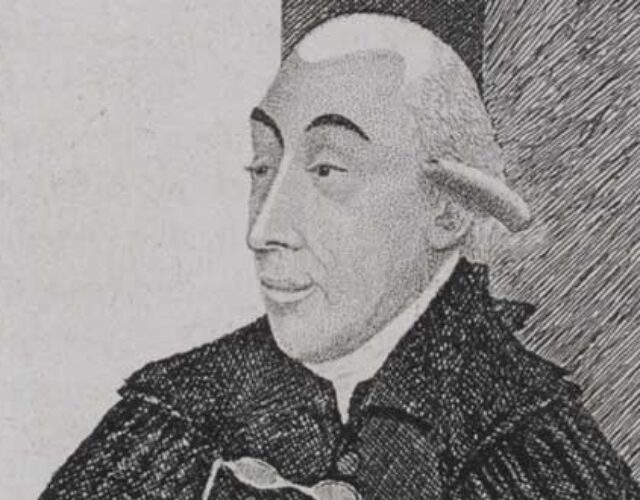Scotland was changing rapidly in 1746. “Young Pretender” Charles Edward Stuart’s Jacobite rebellion against George II had just been defeated in the Scottish Highlands. Defeat meant that the country would now be ruled by the growing merchant and intellectual classes of the lowland cities of Edinburgh and Glasgow. Into this new Scotland stepped Joseph Black, the son of an expatriate Scottish wine merchant. Black wanted to study medicine, at the time the only way for the scientifically inclined to make a living. And when it came to medicine, the Scottish universities provided the best education.
At the University of Glasgow, William Cullen, who was famous for incorporating chemical knowledge into his medical lectures, quickly became Black’s mentor. In 1754 Black began his medical thesis on the topic of magnesia alba (known today as magnesium oxide). In performing a series of experiments on magnesia alba and limestone, Black isolated what he called “fixed air” and what we today call carbon dioxide. Black’s discovery confirmed the suspicions of alchemists like Joan Baptista van Helmont, who in the 17th century broke with the Aristotelian orthodoxy of elemental air and proposed the existence of gases. Black took the next step, realizing that atmospheric air comprised many of van Helmont’s gases, of which fixed air was one. He laid the groundwork for 18th-century chemists like Joseph Priestley, Henry Cavendish, and Antoine Lavoisier, who would discover the other major components of Earth’s atmosphere. William Ramsay, 19th-century Scottish discoverer of the noble gases, wrote a biography of Black and considered him a scientific forefather.
Despite having isolated carbon dioxide during research for his medical thesis, Black is best known for his discovery of latent heat. When a substance changes state—such as from water to steam or steam to water—heat is absorbed or released without any change in temperature. This discovery might have remained purely academic had a young instrument-maker named James Watt not been working with Black. Watt had earlier noticed drawbacks in the Newcomen engine, then the most powerful steam engine in the world. In cooling the steam after it had done its work, the Newcomen engine also dropped the temperature of the driving cylinder, making the engine woefully inefficient. Watt’s innovation, using a separate condenser to cool the steam and conserve the heat of the driving cylinder, produced a more effective engine. When Watt, curious as to why his system worked, told Black of his technical improvements, both men realized that the operation of his engine, in Watt’s words, fully supported “that beautiful theory” of latent heat. Black’s beautiful theory formed the basis of the sustained inquiry by 19th-century chemists and physicists into thermodynamics, a term coined by fellow Glaswegian William Thomson, Lord Kelvin.
During the Scottish Enlightenment the lowlands of Scotland were teeming with intellectuals. Philosophers like David Hume and Adam Smith and natural philosophers like Black and James Hutton walked the streets and ate and drank in the taverns of Glasgow and Edinburgh. The taverns, in particular, were the site both of socializing and of deep thought. Tavern societies like the Select Society and the Poker Club sprang up in Edinburgh and counted all the top Scottish thinkers as members. These societies were not just philosophical: the Poker Club was founded to agitate for a Scottish militia, the lack of which allowed Bonnie Prince Charlie to occupy Edinburgh.
Black, Smith, and Hutton, the man who first proposed the notion of geological or deep time and a close personal friend of Black, eventually decided to create their own society: the Oyster Club. So Hutton and Black, who were known not only for their friendship but also for their lifelong bachelorhood, set out to find a suitable place for the gathering. Only upon Hutton’s late arrival to a meeting and his encounter with “brazen-faced young ladies” did they realize they had introduced many of Scotland’s great thinkers not to a reputable tavern but to a brothel.




